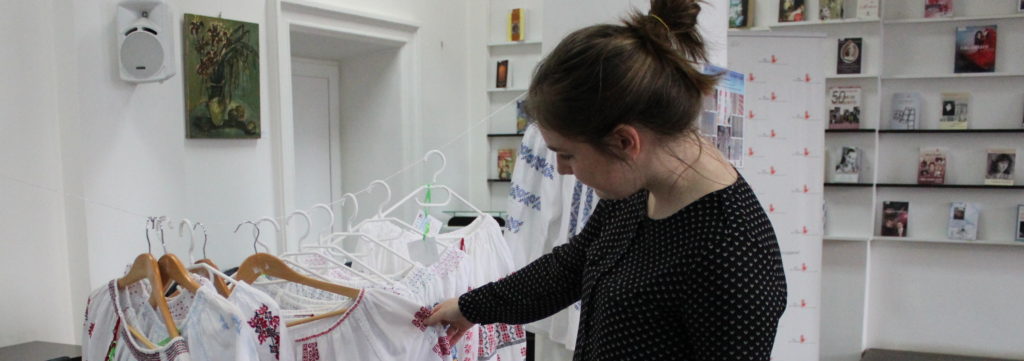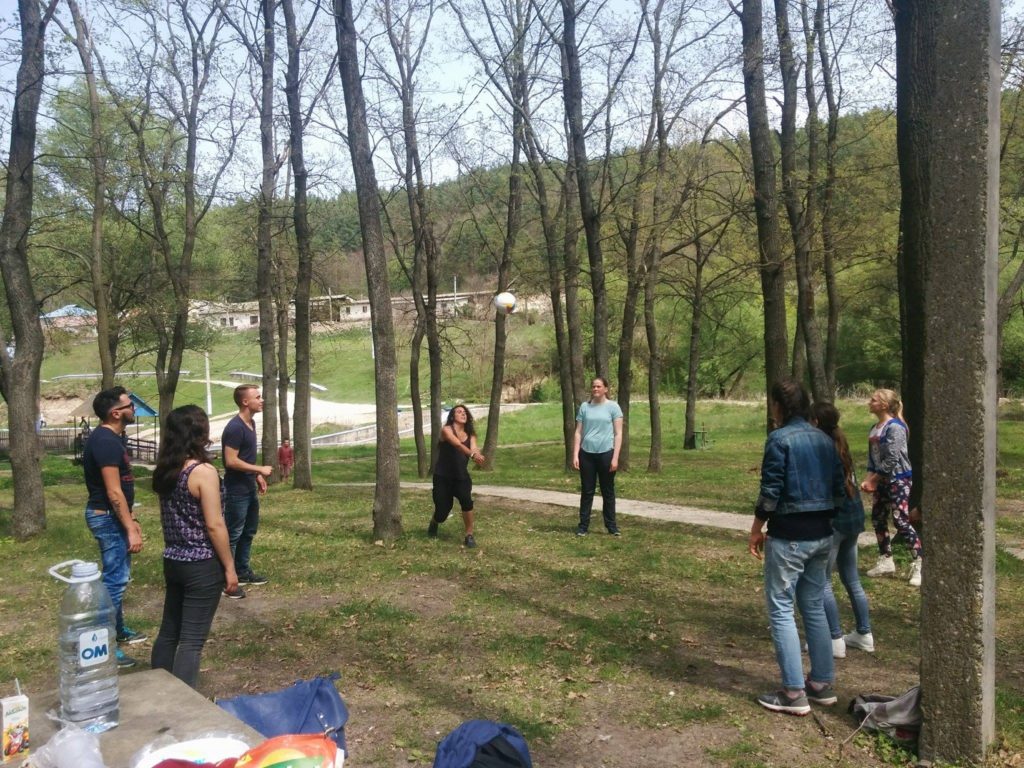Hi all,
Let me introduce myself: my name is Celine and I come from Liege in Belgium. I started a European Voluntary Service in January 2017 with ADVIT as coordinating organization. It all began with checking for hours the hundreds of projects on the EVS Database and applying to the ones I was the most interested in. I finally ended up in Chisinau, the capital city of a small country of Eastern Europe: the Republic of Moldova!
I have to admit that I didn’t know much about Moldova before moving in. I had only heard that it looks like the French countryside in the 50’s and well, being born in the 90’s, I had no idea what it meant. However, discovering an unknown country and build my own opinion about it, without being influenced by previous judgment, stories I heard, reviews of touristic websites or whatever was quite exciting.
My arrival happened really smoothly. The mentor who was attributed to me as a help for the first days came to pick me up at the airport and I had my first ride in the famous Rutiera – most commonly named Marshtruska by the volunteers – which was a good preview of Moldova. I spent five weeks in a host family, living with a lovely Babushka. My knowledge of Romanian language being totally inexistent, it was hard to communicate but this provided us with countless laughing moments trying to sign to each other. However, after a few weeks I found it easier to understand basic instructions and to express myself. I then moved in a flat with 3 other volunteers from Italy, France and Germany. It is a simple accommodation but comfortable and located close to the center which is really convenient!
After a few days of visiting and acclimatizing to the city, I started to work at the Rehabilitation Center for Torture’s Victims (RCTV Memoria). The organization provides rehabilitation assistance to victims of political repression, recent victims of torture in Moldova and among refugees and to victims of domestic and sexual violence through medical, psychosocial and legal support. The staff has been welcoming and I felt integrated in the team straight away. Moreover, the director of the organization was curious about what I wanted to learn and was willing to confer me responsibilities, which was really rewarding.
In a period of 3 months, I already acquire a lot of skills and new knowledge that are going to be useful in my future such as fundraising, project management, reporting, etc. In addition, they gave me the opportunity to attend various events like conferences, exhibitions, demonstrations; I even joined the public of a talk show at the National Moldovan TV! Of course, like in every (volunteer) work, you have to adapt to the organization and its schedule. Some periods are busier and you need to rush or do extra hours and some periods are a bit empty. But let’s see the bright side of this: first, you learn to be flexible and second, you can fill up your free time with personal projects. For example, the other volunteers of RCTV Memoria and I are working on a presentation video of the center aiming to improve their visibility on the net.
An important part of the integration is the language. Our coordinating organization is providing us with 30 hours of lesson, either in Romanian (Moldovan) or Russian. I have Romanian lesson every week together with another volunteer. We learn a lot thanks to our teacher but still, it can be hard to apply the vocabulary and grammar learnt into an actual conversation. That becomes a bit easier with some practice. This is why it is important not to be shy and talk as much as possible with local people: at work, when going shopping, when going out… Honestly, I have to apply this advice more to myself!
Finally, I would like to tell a bit more about the country in itself. Before January, I have never been further east in Europe than Berlin so post soviet style was not something I am use to and I have been stroke that at first. After the winter snow melted and the trees started to get some colors, Chisinau became more charming. It is a small but lively capital city, especially when you get close to Piata Centrala, a big market selling mainly food but also whatever can be sold. There are a lot of parks and lakes where it is pleasant to spend time when the weather is good. There are other places to discover in Moldova: Cricova and its huge wine cellars, Soroca and its Fortress, Orheiul Vechi and its Monastery, Comrat in Gagauzia, etc. It is also pretty easy to visit Romania and Ukraine and other countries close by. But after your trip abroad, you are always excited to come back for… PLACINTE! Placinte is a kind of pastry stuffed with potato, cabbage or cheese that you can find in small take away shops all around the city. It is delicious and cheap. Whenever someone ask me what I love the most about Moldova, the picture of a tasty placinte always comes first into my mind.
In brief, this experience can be challenging but this is probably what makes it so enjoyable and worthwhile at the end of the day. I encourage anyone looking to learn a language, get to know another culture, acquire new skills and, last but not least, meet amazing people – locals and volunteers from all around Europe – to take a step forward and sign up for this adventure!







